I'm paddling a raft. Luke Nelson is paddling a board. We're both fly fishers from Idaho. We like boulder hopping small tributaries with Tenkara rods, but neither of us have a rod on this trip. We're in Bears Ears National Monument to run dirt and float water. Water that is so sandy, I know a hook set is not in the cards. I'm told native tribes find catfish here. Protected humpback chubs swim the San Juan River too, but with flows at 6,000 cubic feet per second instead of the average 2,000 cfs, the swift current isn't holding patience for casters so we paddle. This is Nelson's sixth trip to Bears Ears since November. The land of ancient writings and cliff dwellings has his attention.
"I left this place enamored kind of like a first date," Nelson says. "I live seven hours away so it's not easy for me to get here, but this place captured me. Around every corner in these canyons, your expectations are exceeded. If you don't get out of your car, it looks like a desert wasteland, but it sure as hell isn't."
Nelson is a physician's assistant by trade. He runs trail on the side, but his athletic addiction is starting to take over. He runs up to 90 miles a week and he ran Bears Ears for Patagonia's video campaign to protect the national monument this spring. That turned him into a poster boy for protecting public lands.
"I think at times it's uncomfortable, but not difficult," he says. "I love the place that monuments are, but because it's so polarizing, it's uncomfortable at times."
Discomfort is evident driving through Blanding, Utah where anti-monument sentiment runs high and white picket fences are bannered in black and trucks are stamped with 'no monument' stickers. The display is in stark contrast to what's going on in Bluff, 26 miles south of Blanding. Bluff rolls out the welcome mat for visitors with 'pro bear' decals even though there is still no official, federal sign marking the entrance to the new national monument. And the nearby town of Monticello, Utah has its own way of chiming in: a new outdoor school with its own pro-monument poster boy as executive director.
"We love this place. We like the fact that we live out in the middle of nowhere. We like that nobody is here. There is a concern about people knowing where we are," says Chris Giangreco, Canyon Country Discovery Center executive director. "That's part of the fear the local community has. We don't want to be Moab. We won't be Moab. We will be Monticello with a national monument."

Moab is an hour away. That gateway to red rock country was made famous during the 2002 Winter Olympics held in Utah. The town took off and never looked back, but Moab is surrounded by Arches National Park and Canyonlands National Park, not a monument. National parks draw more people, and more dollars, than monuments.
A grassroots effort in Idaho already knows this. That's why there's growing interest in turning Craters of the Moon National Monument into a national park. Idaho doesn't have a national park and parks attract attention. The kind of attention some southern Utah locals don't want.
"The government hasn't paid attention to this area for so long and now they come in and say this is what's going happen to your home. People are pissed," says Dustin Randall, Roam Industry owner and outfitter. "It needs to be protected, but 1.3 million acres? That's a chunk and monument is a heavy stick."
But monument or not, the land that comprises Bears Ears is already federally protected. It's co-managed by Bureau of Land Management and U.S. Forest Service. It's public land anyway. That doesn't go away even if the monument goes away so there's no land grab here. But while designating Bears Ears a monument doesn't create more public land, it is creating more arguments and Utah's political pushback on public lands is rubbing the nation in a rough way.
Major supporters of Outdoor Retailer, the largest outdoor show pulled out of the event because it's hosted in Utah where politicians are increasingly seen as anti public lands. Patagonia, Black Diamond and GU Energy Labs won't be at the show this summer. GU, the makers of nutrition for endurance athletes, took its $70,000 budget for Outdoor Retailer and put it toward defending public lands and getting people out on that land.
"We care about this area not only because these are the places we recharge, they are the places of our business," says Adam Chamberlain, GU vice president of marketing. "If we stand down and don't protect places like this, we're eliminating places for our kids to play and cutting down on our business."

Like Chamberlain, Randall is trying to make play his business during the tug-of-war over Bears Ears National Monument. He runs a bike packing business based in Monticello, Utah. He's a local catering to outsiders and he's a poster boy in transition. He doesn't want his dad's cattle ranch. Randall wants bikes. The fat and mountain kind.
"Six years ago you'd rarely see a car with a bike on the back. Now it's every other car," Randall says. "I told my dad what I wanted to do and he said, 'Damn hippies coming down here.' Then, two days later, he came back to me with an idea on how to run my business. So the changing of the guard is happening. In another 20 years, the mindset that is so present now will change."
But Bears Ears doesn't have another 20 years. It has a matter of weeks. The Trump administration is reviewing national monuments established since 1996. Bears Ears is one of them and it's the only one with a rush order. The public comment period for all national monuments closes July 10. Public comments on Bears Ears closed May 26.
"If there was ever a national monument that lines up with the Antiquities Act, it is clearly Bears Ears," Nelson says. "You can't go around a corner without running into something awesome whether it's rock art or a dwelling and that's why it needs protection. It has survived 3,000 years and with one bulldozer, it could be gone and we can't get that back."






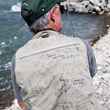




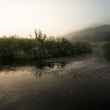




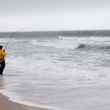
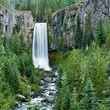








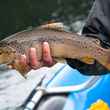
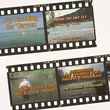


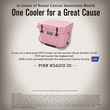
Comments